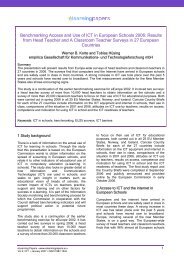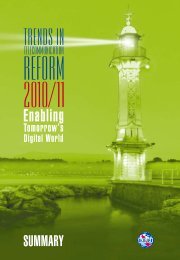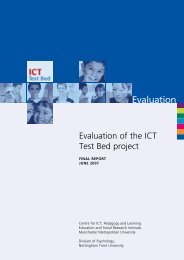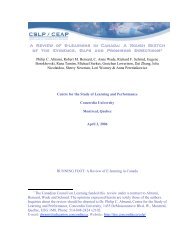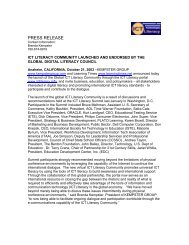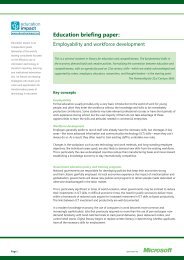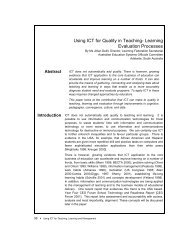147 pages pdf - ICT Digital Literacy
147 pages pdf - ICT Digital Literacy
147 pages pdf - ICT Digital Literacy
You also want an ePaper? Increase the reach of your titles
YUMPU automatically turns print PDFs into web optimized ePapers that Google loves.
Pedagogy & Webagogy -- Ready, Set … TRAIN and FACILITATE!<br />
#553: Positioning e-Learning<br />
Make e-Learning courses a pre-requisite for some of the more expensive instructor-led technology courses.<br />
You have a better chance of level setting the audience for the classroom experience.<br />
Alexis Bernard<br />
Northern Trust<br />
#554: Desktop-to-Desktop<br />
Desktop-to-Desktop can be an excellent tool to combine with web-based learning. Establish a timeframe<br />
for the students to take the web-based instruction by establishing a start date and an end date for the<br />
training. Start the instruction with a real-time desktop-to-desktop session led by an instructor who<br />
introduces and discusses the training, the purpose, the objectives, the activities, and how students will be<br />
able to ask questions once they begin the training. You can also hold a session at the end as an<br />
opportunity to answer final questions and wrap up the training.<br />
Richard Nuffer<br />
Defense Logistics Agency<br />
#555: Start Them Off On The Right Foot<br />
Give a proper orientation and you are guaranteed to have fewer problems/issues.<br />
Geri Hubbard<br />
Galaxy Net Solutions<br />
#556: These Things Happen<br />
For synchronous e-Learning, always have a dial-up connection available for use (as a leader) in<br />
case the network goes down during training times.<br />
Cameron Griffith<br />
Ingram Book Group<br />
#557: Learners Learn From Each Other<br />
Incorporate participant dialog into the real-time sessions. Don't make the mistake of using e-Learning as<br />
another "talking head" approach to learning. Have discussion questions that encourage participants to<br />
voice their opinions and to draw the discussions to higher levels of learning.<br />
Sondra Hack<br />
Highmark, Inc.<br />
#558: To Essay, or Not --That Is The Question<br />
As you establish the types of questions you will ask in the testing portion, think through the<br />
grading procedure carefully. How will the system grade the questions and how much time will<br />
you have to grade the questions? If you are testing 150 learners, minimize the number of essay<br />
questions or eliminate them all together. If you will be unable to read, grade and record all 150<br />
students in a timely fashion, do not provide essay or short answer questions.<br />
Michelle LeBlanc Blair<br />
John Wiley & Sons, Inc.<br />
#559: Be Flexible<br />
Don't assume. Learn as much as possible about your participants BEFORE the course. If that's<br />
not possible, learn as much as possible at the beginning of the course. Then be flexible enough<br />
to meet their learning needs and styles.<br />
Maureen Miller<br />
#560: The Right Context Makes Features Meaningful<br />
Demonstrate new features always in the context the client or student is working in. Let them experience the difference.<br />
Jan Cromwijk<br />
Universiteit Twente<br />
701 e-Learning Tips by The MASIE Center www.masie.com 110



